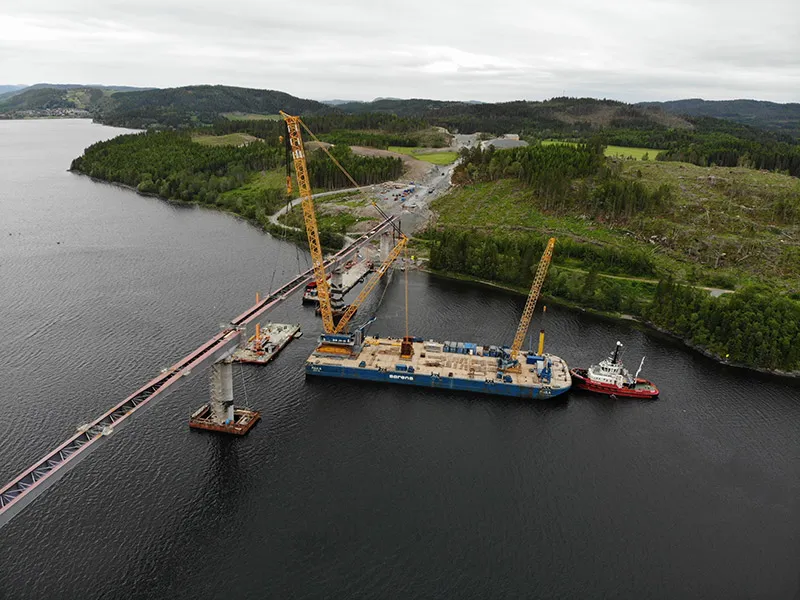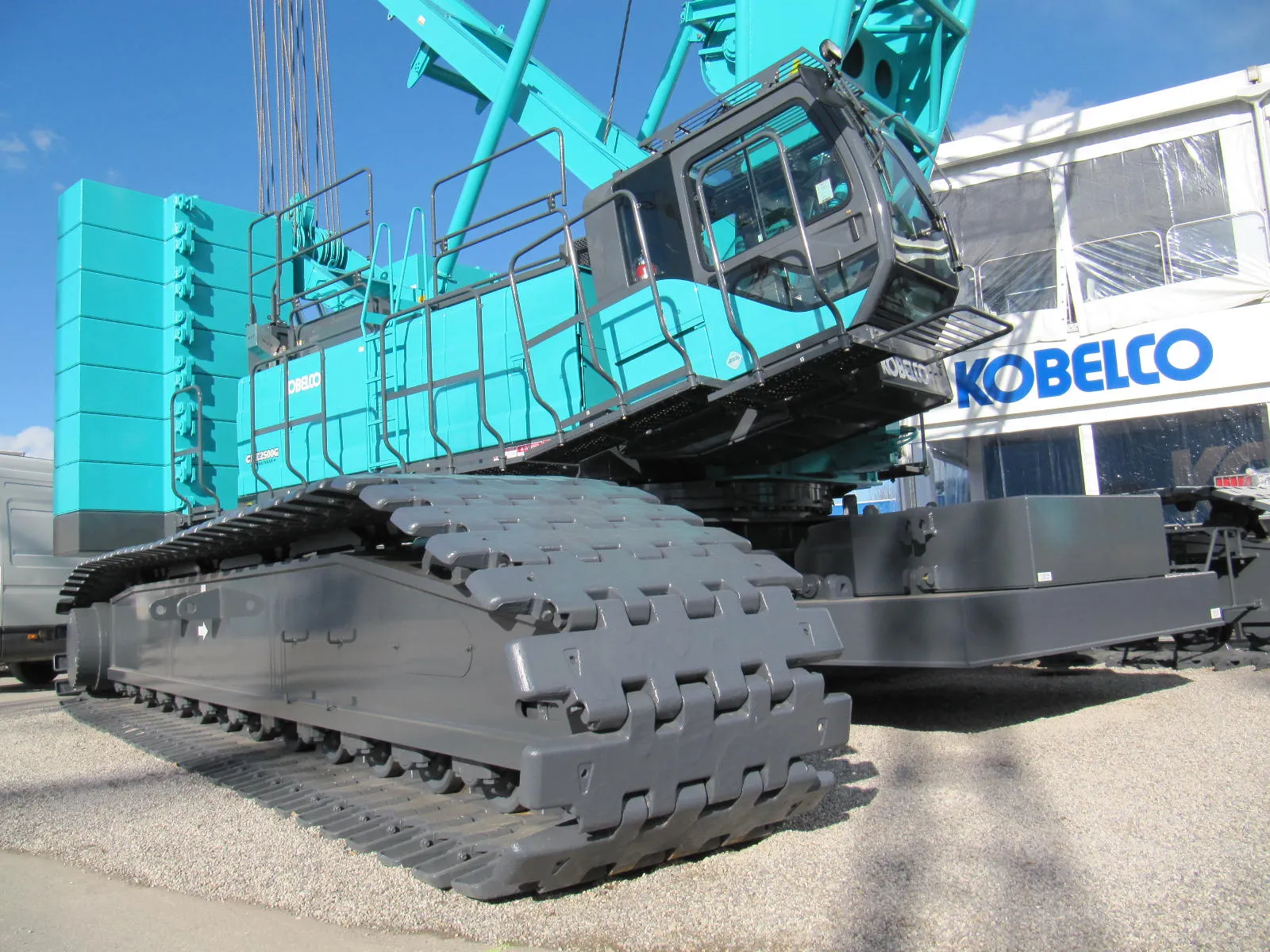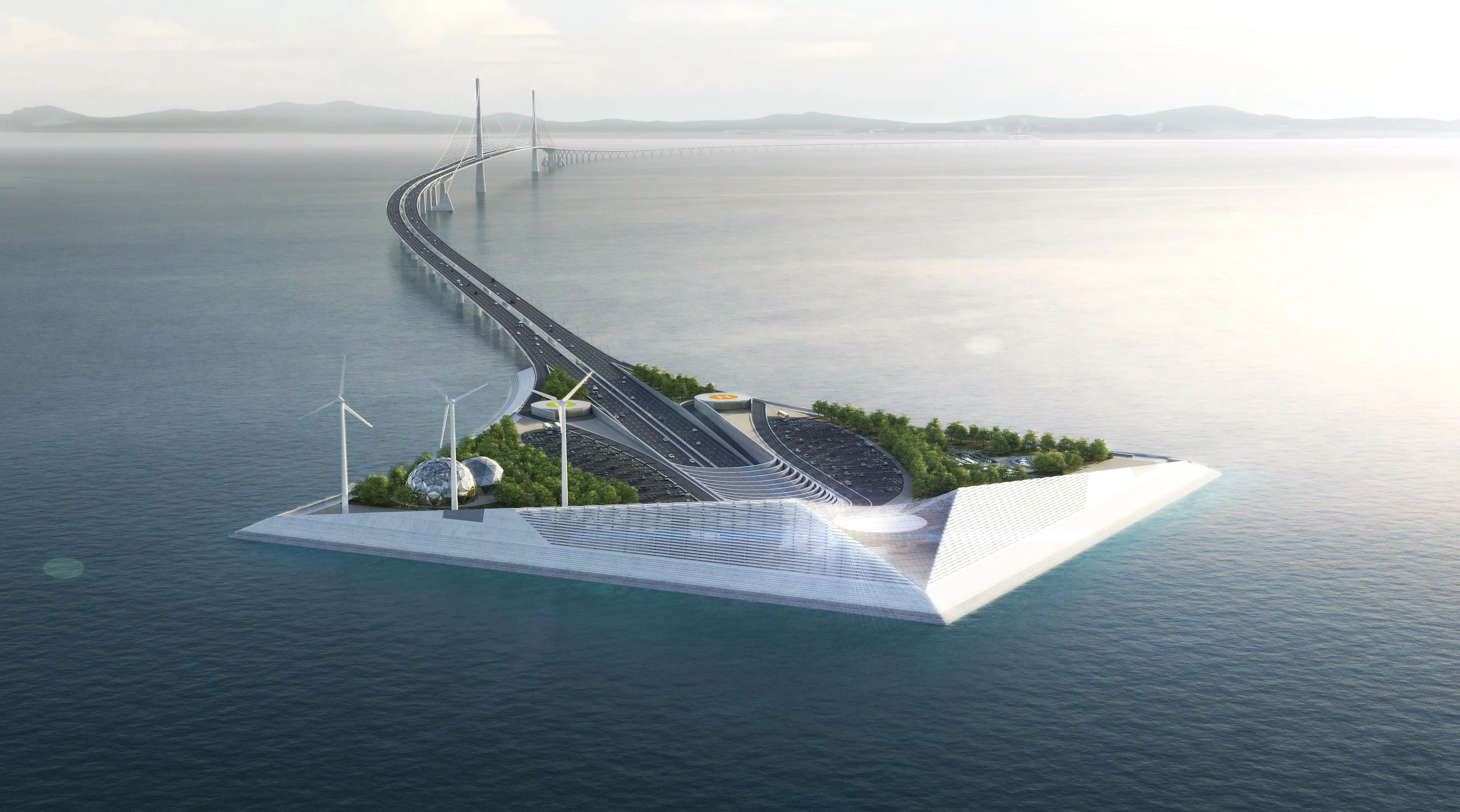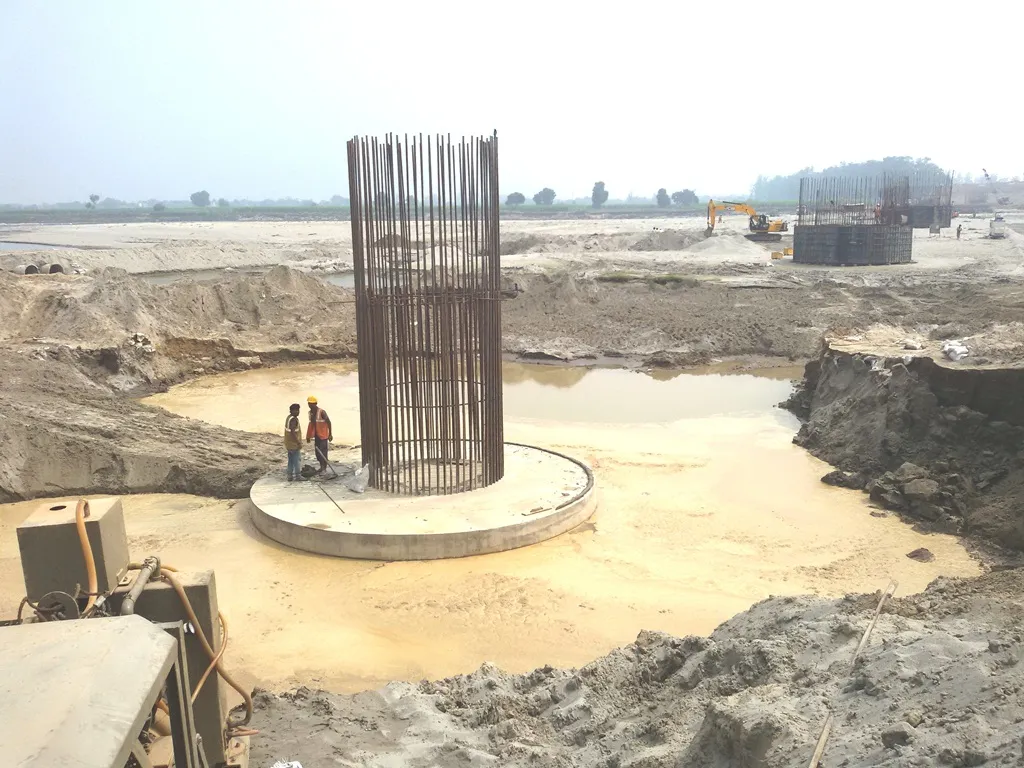
The 580m-long steel-concrete composite bridge, constructed by China’s Sichuan Road and Bridge Group (SRBG), is part of Norway’s County Roads 17 and 720. The company won the contract through an open tender and finished the project in 26 months.
Last September, heavy lifting specialist Sarens finished installing six pre-assembled bridge segments, varying between 40-150m long and up to 15m wide. The segments weighed between 130-780tonnes. Sarens barged the bridge segments from Malm to the construction site, a distance of about 5km. The crew also used a 24-axle SPMT (self-propelled modular transporter from Mammoet), a Kobelco hydraulic CKE-2500 crawler crane and a Terex-Demag CC8800-1 crawler crane. The CC8800-1 had a capacity of 1,600tonnes and was fitted onto the barge to perform all heavy lifts.
Sarens said that this was the first time a CC8800-1 crane had been used to install bridge elements from a Sarens barge. It was loaded onto a barge in Gent, Belgium, and towed to Malm in Norway by tugboat - an eight-day voyage. The crane was then configured in SSL MB 84m configuration for the first four lifts and the main boom was lengthened to 120m for the last two elements.
The crew lifted the first segment on day one and the sixth and final segment on day 14 – a two-week time frame set by the client, according to Joost Elsen, Sarens operations head who oversaw the work. “Challenges for the lifting were for once not the movement of the crane, but the exact positioning of the barge as we intended to minimise crane movements to only boom up and down to the installation radius.”
Main contractor SRBG says that its expertise lies in construction of deepwater long-span bridges, highway pavements and extra-long tunnels. Much of the company’s management team for the Beitstad Bridge came from the recently completed Halogaland Suspension Bridge, 200km north of the Arctic Circle. The Halogaland Bridge crosses the Rombaksfjorden in Narvik Municipality in Nordland County. Construction began in February 2013 and finished in December 2018 when it opened to traffic.








